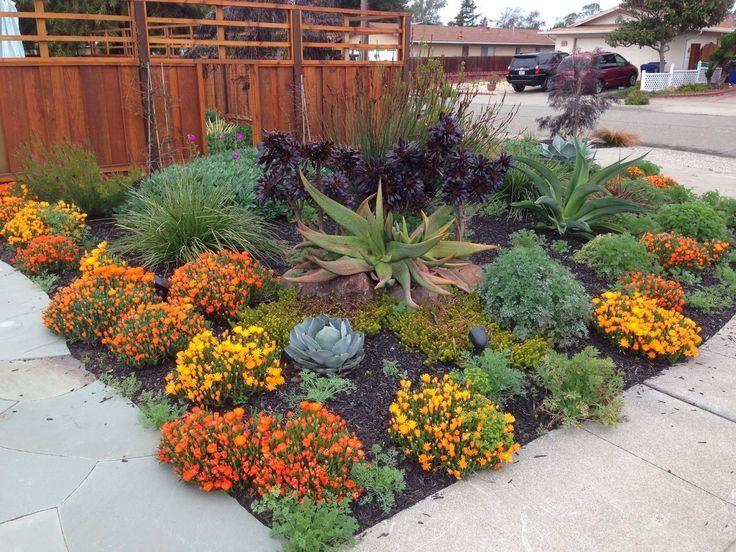Trusted Landscaping Company Jacksonville: Quality Landscaping Providers for Your Home
Trusted Landscaping Company Jacksonville: Quality Landscaping Providers for Your Home
Blog Article
Elevate Your Property's Visual With Sustainable Landscape Design Styles and Eco-Friendly Practices
:max_bytes(150000):strip_icc()/2583801_toddd_49-1-bc209c65ca1a4917afe2f2cbc437027c.jpg)
Advantages of Sustainable Landscape Design
Executing sustainable landscaping practices not only saves all-natural resources but likewise promotes biodiversity and improves total ecological health and wellness. One significant benefit is the decrease of water intake with the usage of drought-resistant plants, rainfall gardens, and efficient irrigation systems.
Furthermore, sustainable landscape design can improve dirt health and wellness by reducing making use of chemical plant foods and pesticides, therefore producing a healthier setting for plant growth and helpful soil organisms. This, in turn, boosts the total durability of the landscape to stand up to environmental stress factors and environment adjustment impacts - landscaping contractor Jacksonville. In addition, lasting landscaping practices can bring in diverse wild animals, consisting of pollinators like bees and butterflies, promoting a much more balanced and vibrant community within the building
Incorporating Native Plants
To build on the advantages of sustainable landscape design, a strategic concentrate on integrating indigenous plants can better enhance environmental strength and promote biodiversity within the landscape. Native plants are varieties that naturally take place in a particular location and have developed to prosper in the local climate, soil problems, and community. By including native plants in landscaping designs, building proprietors can lower water use, minimize the need for chemical pesticides and fertilizers, and sustain the neighborhood wildlife population.
Including native plants likewise aids in preserving the special character and identity of an area's flora. These plants commonly require much less upkeep when developed, making them a affordable and sustainable landscape design remedy over time. In addition, native plants can draw in indigenous pollinators like butterflies and , adding to the total health of the environment.
When picking indigenous plants for landscape design tasks, it is essential to select species that are fit to the details environmental conditions of the site. Consulting with local baby rooms or arboretums can provide valuable advice on choosing the best native plants for a certain area. By integrating indigenous plants into landscaping styles, property owners can create gorgeous, lasting outside spaces that profit both the setting and the neighborhood.

Water Conservation Methods
Reliable irrigation techniques play an essential function in lasting landscaping practices, guaranteeing ideal water conservation efforts in exterior areas. Carrying out methods such as drip irrigation, rain harvesting, and clever watering systems can substantially decrease water wastage while keeping a healthy and balanced landscape. Leak irrigation supplies water straight to the origins of plants, decreasing dissipation and overflow. Rainwater harvesting entails accumulating rain from roofs and saving it for later use in irrigation, minimizing the reliance on community water sources. Smart watering systems use weather condition information and soil dampness degrees to adjust sprinkling routines, protecting against overwatering and advertising water efficiency.
In enhancement to sophisticated watering techniques, xeriscaping is an additional water-saving landscape design Visit Your URL technique that concentrates on utilizing drought-resistant plants, compost, and effective irrigation to develop a low-water landscape design - landscaping companies Jacksonville. By selecting native plants that are fit to the local environment and dirt problems, homeowner can decrease the demand for too much watering, inevitably conserving water and promoting a sustainable exterior environment
Eco-Friendly Hardscaping Concepts
Enhancing outside spaces with environmentally friendly hardscaping features can contribute dramatically to lasting landscaping techniques. When taking into consideration hardscaping elements, select materials like reclaimed timber, recycled concrete, or natural stone to decrease environmental effect. These materials not just include an one-of-a-kind visual interest your outdoor space but also decrease the requirement for new sources extraction.
Executing absorptive leading alternatives such as crushed rock or permeable concrete can help in reducing water drainage and advertise groundwater recharge. These options enable rainwater to seep right into the ground, preventing disintegration and minimizing the worry on stormwater systems.
Integrating native plants into hardscaping designs can further enhance eco-friendliness by supporting local wild animals and reducing the need for extreme watering or chemical therapies. By incorporating vertical yards or green wall surfaces, you can introduce extra plants into city settings, improving air top quality and biodiversity.
Integrating energy-efficient illumination, such as solar-powered LEDs, right into hardscaping layouts can decrease power intake and lower your home's carbon footprint. Prioritizing eco-friendly hardscaping concepts not just improves the elegance of your outdoor space however additionally demonstrates a dedication to Get More Information environmental stewardship.
Upkeep Tips for Sustainable Landscapes

Regularly trim plants to advertise healthy development and avoid overgrowth that can lead to pest problems or diseases. Usage natural fertilizers to nurture the soil and plants without unsafe chemicals that can leach right into the setting.
Conclusion
To conclude, sustainable landscape design practices supply many benefits for homeowner, from boosting the aesthetic charm of the environments to promoting ecological preservation. By incorporating indigenous plants, implementing water conservation methods, and making use of environment-friendly hardscaping concepts, residential or commercial property proprietors can develop gorgeous landscapes that are likewise environmentally liable. With proper upkeep, lasting landscapes can contribute and prosper to a healthier environment for both people and wild animals.
Additionally, lasting landscape design can improve dirt health and wellness by lessening the usage of chemical fertilizers and chemicals, therefore creating a healthier atmosphere for plant growth and beneficial helpful site dirt organisms.To construct upon the advantages of sustainable landscaping, a critical emphasis on including indigenous plants can additionally boost ecological resilience and promote biodiversity within the landscape. By including native plants in landscaping layouts, building proprietors can decrease water usage, reduce the demand for chemical pesticides and fertilizers, and sustain the regional wildlife populace.
These plants typically require much less maintenance as soon as established, making them a sustainable and economical landscaping remedy in the long run. By incorporating native plants right into landscaping designs, building proprietors can create attractive, sustainable exterior spaces that profit both the area and the atmosphere.
Report this page